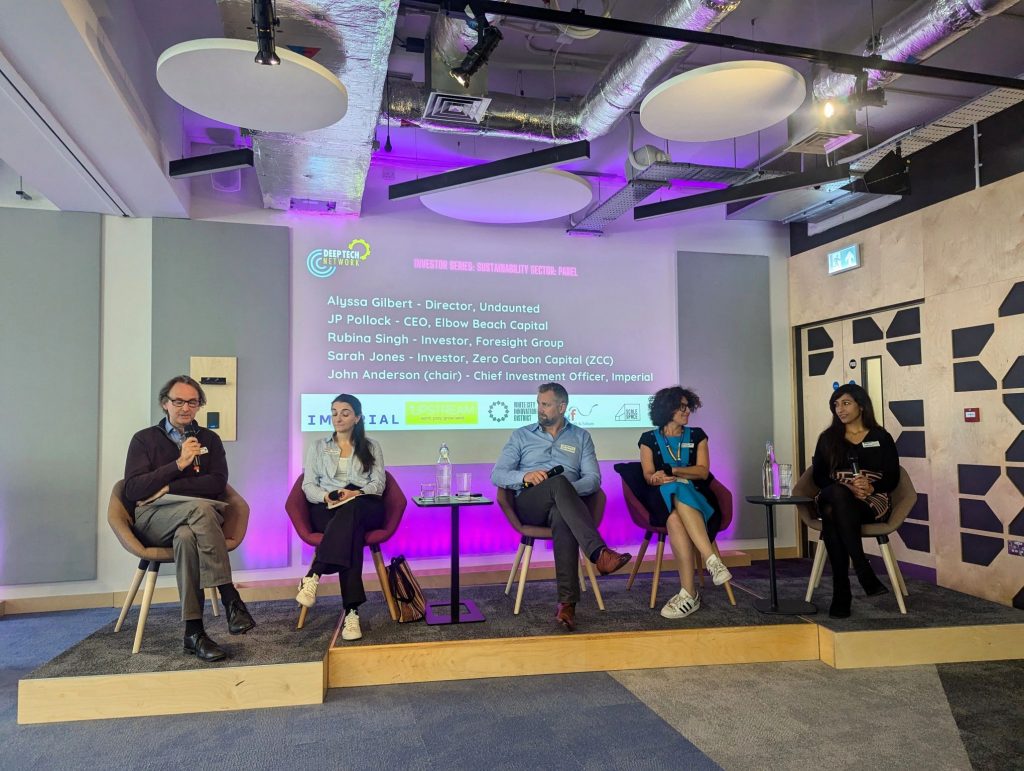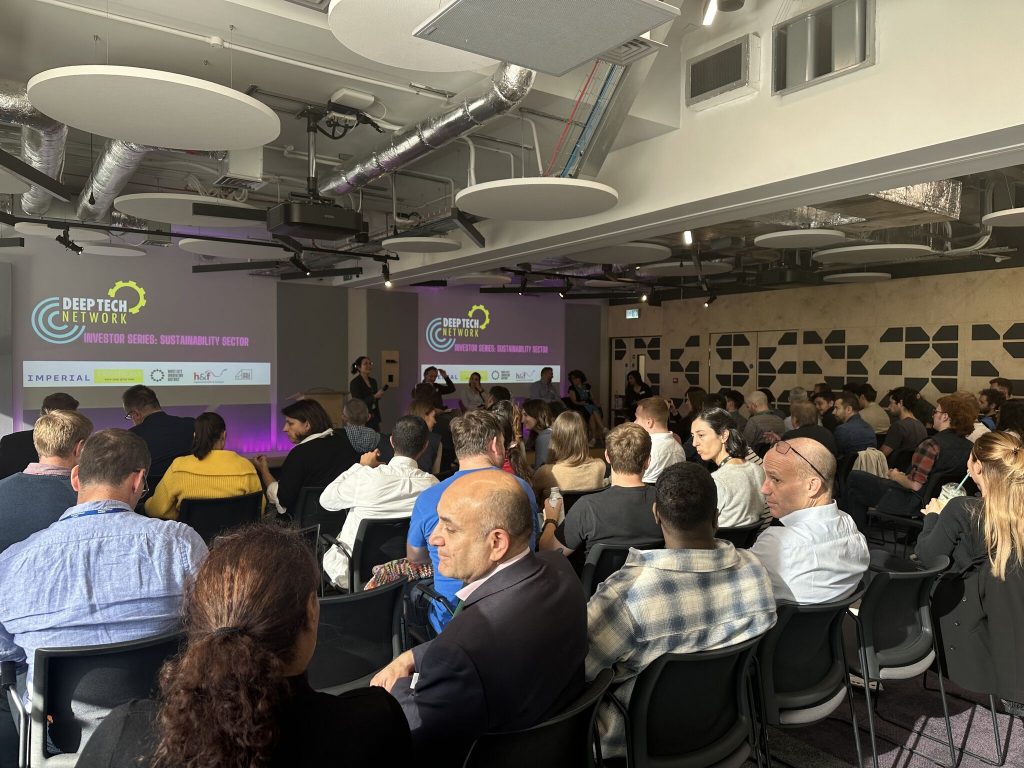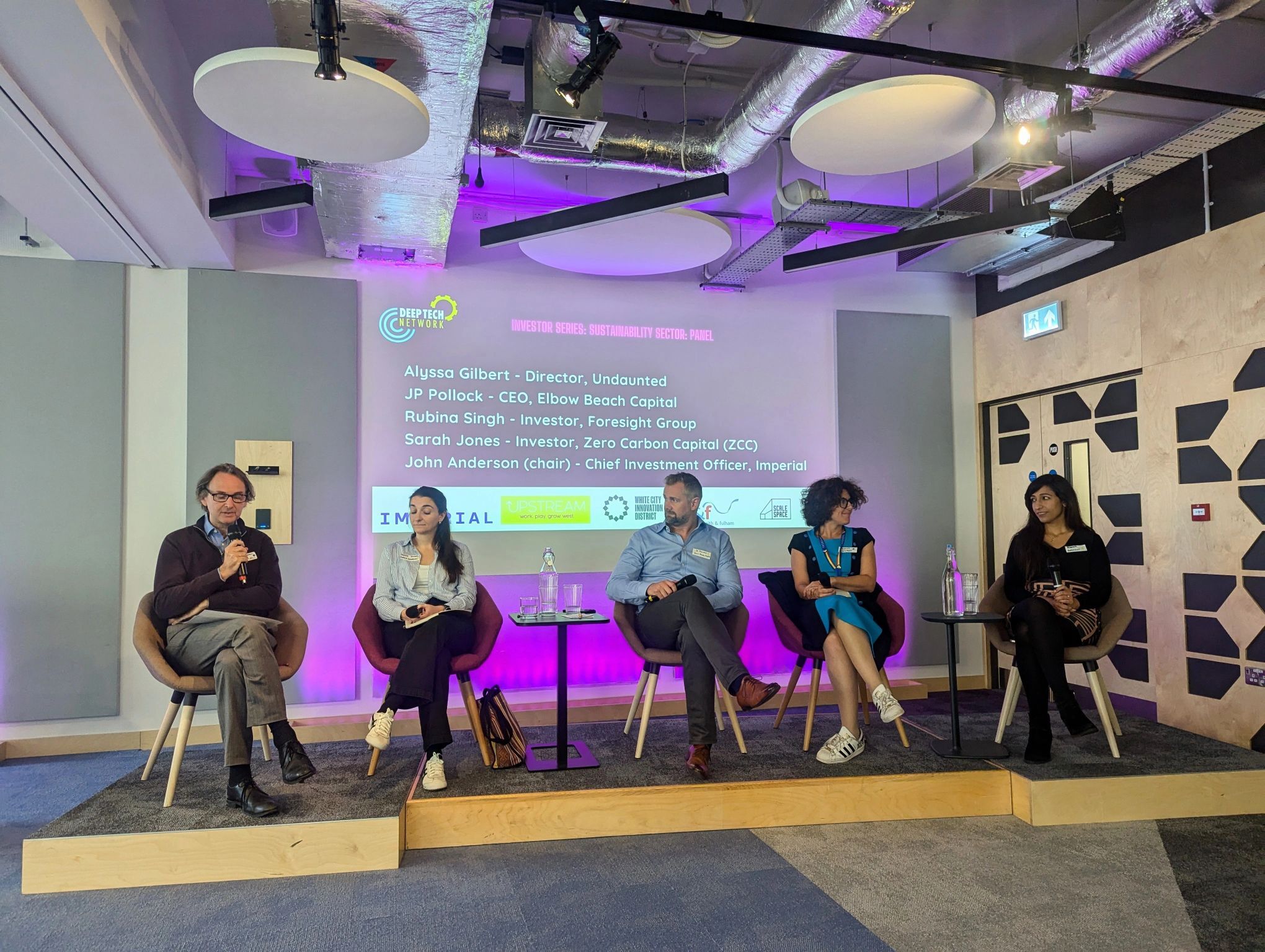12 top takeaways – from sustainability investors
Here’s Cat Rigoni’s key takeaways from the session on what VCs care about, when choosing a Sustainability venture to invest in.
This was part of the new Investor Series, which debuted in May 2024 that sits alongside our Deep Tech Network Industry Showcase. Thank you to the panel for their insights, candour and for staying till the bitter end to talk to the startups in attendance.
- Alyssa Gilbert – Director, Undaunted & Director of Innovation, Grantham Institute for Climate Change and the Environment
- Jonathan Pollock – CEO, Elbow Beach Capital
- Rubina Singh – Investor, Foresight Group
- Sarah Jones- Investor, Zero Carbon Capital (ZCC)
- John Anderson (chair) – Chief Investment Officer, Imperial College London
“We are on a really short timeline to crack this climate problem. We don’t have time to dismantle capitalism.”
One of my favourite quotes from this event! How then do we leverage capitalism to get these climate technologies out there?

- Emphasis on Impact: VCs care about emission reduction potential: can your company produce at least half a gigaton per year of greenhouse gas emissions reduction by 2050?
- …and disruptive technology : is it a breakthrough? Does it make things 10 times faster/better/cheaper than incumbent?
- ..and price parity: is it priced competitively vs incumbent fossil fuel solution (No one wants to pay a green premium) or incoming competitors?
- Know your value to a customer: VCs are not interested in brilliant solutions waiting for a problem to solve. They want to know that you have not (only) been locked in a lab honing your perfect idea, but also that you have sat with customers and are clear on how your solution creates value for them.
- ..even better, make your TEA : your Techno-Economic-Analysis doesn’t need to be perfect (you can start with assumptions and fill in the data as your progress) however it needs to show your product has traction. Brilliant technology doesn’t always translate into a successful product if someone isn’t willing to pay for it. For example, do you have those offtake agreements that show that the product you’re manufacturing has a customer?
- De-risk gradually, and continuously: this changes depending on the stage you’re at, but initially starts with science and engineering risk, moving on to manufacturing supply chains and the market risk.
- Get Deep Tech-savvy investors on your board: you need investors (ideally the investor director on your board) who understand the extended Deep Tech timelines and know that setbacks are normal and that you might be able to catch up again.
- Seek modular investment: because of the high capital requirements, once you get to that scaling stage you may want to consider going modular, where modular means that you can de risk in smaller units with less capital. Also consider manufacturing with a CMO (contract manufacturing organisation), again to derisk the scaling process.
- Consider partnering with a client: manufacturing in partnership with a client can be a great idea at many levels. It shows investors that you have market traction.
- Figure out an exit for your investors: when is a liquidity event likely for them in your product development?
- Don’t discard CVCs (Corporate Venture Capital): there are plenty of upsides in partnering with them, from a longer-term view to expertise in the sector to the fact they can become your first customers. Watch out though for tricky spots around exclusivity and control over direction of research/direction of product development.
- IPO isn’t the only exit: in fact 70% of all ClimateTech exits are through strategic acquisition. Corporates don’t do as much R&D as they used to and they are under pressure to find the technologies that can solve their ambitious climate goals: so you can get the double whammy where they don’t just invest in startups for the returns, but also to solve their climate-related challenges.



